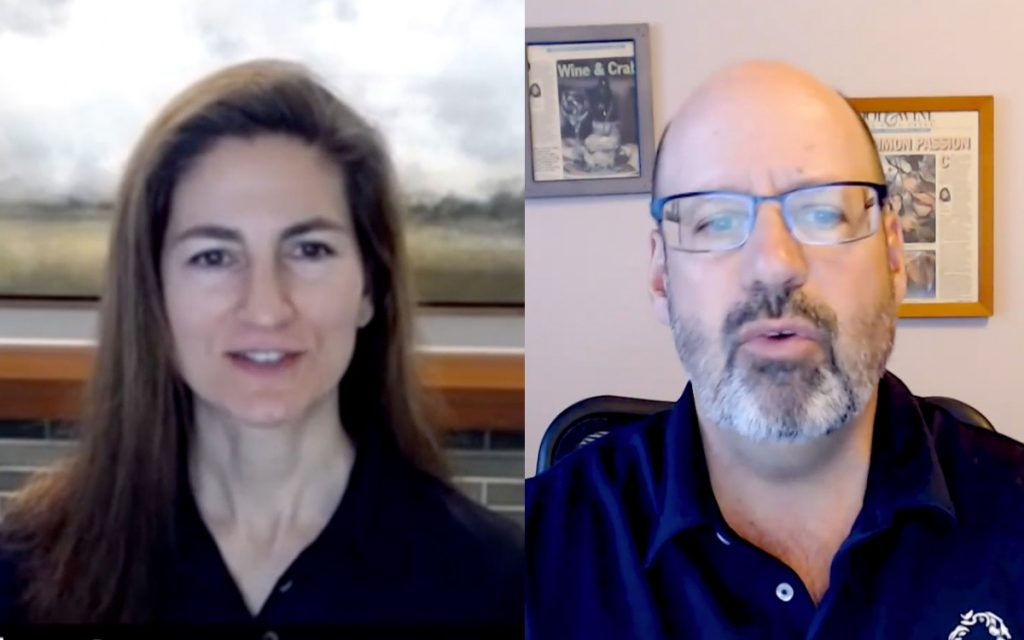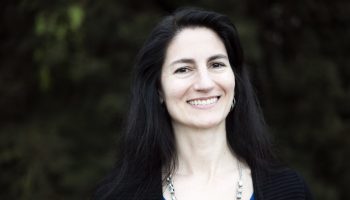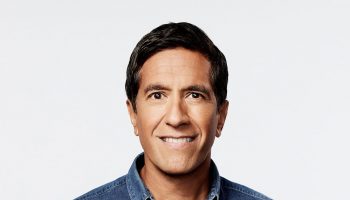
Sitting on the beach, the ocean is still big, the water is still blue and the horizon is still endless. Yet the news is full of wildfires, droughts and temperatures in Siberia reaching 100 degrees Fahrenheit. So it might be easy to assume that climate change is mainly affecting the land.
“One of the things we do at Ocean Conservancy,” said the organization’s chief scientist George Leonard, “is we try to change the conversation by telling the stories about those people, those communities, those industries that are either already wrestling with the ocean impacts of climate change or will have to wrestle with those impacts in the future.”
Leonard and Janis Searles Jones, CEO of Ocean Conservancy, spoke on Tuesday, June 30, on the CHQ Assembly Video Platform, delivering their lecture “The Ocean and the Climate: How to Save Both.” This was the second presentation in Week One’s theme of “Climate Change: Prioritizing Our Global and Local Response.”
Leonard began by detailing the importance of the ocean, saying it is the life support system of Earth. He said the ocean produces half of all oxygen in the atmosphere and governs weather, in addition to the ocean’s fish providing 16% of global animal protein.
Leonard then said that there are four major ways that climate change is impacting the ocean: the water is hotter, more acidic, has less oxygen and is essentially bigger from sea level rise.
In the last 50 years, the ocean has absorbed about 90% of excess heat caused by climate change. Leonard said that the ocean has warmed .7 degrees Fahrenheit since measurements started, which may seem like a small number, but the rate has doubled in the last two decades. He also said averages do not tell the whole story, as different parts of the ocean have heated more than others.
“So think about a sweltering summer day in New England with 95% humidity, and imagine the same kind of thing happening under the water,” Leonard said.
Among the many animals affected by rising temperatures are Maine Lobsters, which are slowly marching from the Gulf of Maine into Canada in search of cooler climates.
From a physics perspective, Leonard said, a warm ocean can hold less oxygen than a cool one. Every marine animal is affected by this de-oxygenation, also called ocean suffocation. From 1960 to 2010, he said, the ocean lost 2% of its oxygen, about 5 to 8 billion tons. The next impact climate change had on the ocean is sea level rise. About 2.5 billion people live 60 miles from the coast. Many of these populations are the least prepared, and have little access to resources to rebuild.
The last impact of climate change that Leonard detailed was the drop in pH levels in the ocean, 30% since the beginning of the Industrial Age. This is particularly dangerous for shelled marine life.
He said this almost ran the oyster industry, which produces $270 million annually, out of business. In 2007, the Whiskey Creek Oyster Hatchery in Oregon had trouble keeping baby oysters alive, finding them dead at the bottom of their tanks. About a year later, other companies in the region had the same problem. They found out the cause was low pH levels, and not a bacteria or disease, and while they have found processes to put a Band-Aid on the issue, according to Leonard, only reducing carbon emissions globally will save this industry.
After Leonard’s pre-recorded section, the lecture transitioned to a live conversation between Jones and Vice President and Emily and Richard Smucker Chair for Education Matt Ewalt, followed by a Q-and-A section from viewers.
Jones lives near the Whiskey Creek Hatchery, and she said others in the industry have felt the effects of climate change too. Another example is an oyster farm that has been owned by a family for five generations, named Hama Hama Oyster Farm. The brother and sister who now own it have become advocates for coastal communities.
And part of Jones’ and Leonard’s responsibilities include connecting these business owners — who are personally affected by climate change’s impact on oceans — to policy makers. This practice of connecting voices to Congress helped ensure that funding for the National Oceanic and Atmospheric Administration’s ocean acidification program has grown from $6 million to $11 million. NOAA is one of few climate-centered initiatives with increased funding over the past few years, and Jones attributes that rise to those most affected speaking directly to members of Congress.
One of Ewalt’s first questions was about the importance of adaptation strategies, and strategies to decrease the severity of climate change.
Jones said that even if mankind turned off all emissions right now, the ocean would still hold lingering effects of climate change.
“Regardless, we are going to see oceans and coasts that will look different from the ocean of today and there’s a lot that we can do to prepare for that,” Jones said.
She said that the ocean has to be made more resilient, which is done by eliminating stressors like overfishing, plastic pollution, as well as oil spills and noise pollution.
One of the ways to lessen these stressors is with spaces in which fishing and natural gas mining are limited, which are called Green Protected Areas. Jones said that 30% of the ocean needs to be protected to achieve a more resilient ocean, and as of now, 5% is protected, with 2% fully protected.
“(Those protected areas) demonstrated to have a really huge conservation benefits and the science has demonstrated that marine protected areas result in a healthier ocean,” Jones said.
Ewalt’s next question was about generational work, and what this work looks like in the short and long term.
“We are in an interesting moment of time right now, I would say; this is clearly an all-hands-on-deck moment. We’re behind where we should be,” Jones said. “There’s still a lot of opportunity and there is still time, but we need everybody’s focus.”
In the short-term in the United States, the need to defend existing environmental regulations is very high. Many of these environmental regulations are being rolled back, such as ones to reduce emissions.
“We need to defend those existing protections, so that we can start building on top of them to increase our climate ambition and to create lasting change,” Jones said. “So that’s one important short-term action … both domestically and internationally.”
The next question was from a viewer asking what progress has been made to reduce the use of plastic in other countries. This person wrote that when they traveled to small coastal villages in Vietnam, they found that no garbage or recycling service existed, and everything went into the ocean.
Jones said in the past, she and her coworkers would annually clean up beaches in select countries. After some time, they realized that the solution was stopping the trash from ending up on the beach, instead of collecting it after the fact. These scientists started asking basic questions, like where the trash was coming from, how much trash was in the ocean and how the trash impacted nature.
“We didn’t know the answer to any of those questions. The field was really a new field,” Jones said.
After some time researching, they found that the best way to reduce the flow of plastic into the ocean was to create effective waste management systems in those countries.
Based on a second set of research, they found that the main barrier to creating those systems was financing, and having the resources to support collection and basic waste management.
Ewalt closed by asking Jones whose climate work is inspiring her the most right now.
“There is so much remarkable science being done right now … there’s still so much to learn about the ocean,” Jones said.
Jones talked about coral scientists and the creative work being done around full restoration, and people moving threatened species to a new location, or assisted migration. She also mentioned Greta Thunberg and the youth movement to combat climate change.“I have a daughter, and she is part of what keeps me optimistic every day. We are going to — she’s going to — have a different world than I do,” Jones said. “But it’s part of my responsibility to try to make that as good a world as I can.”





